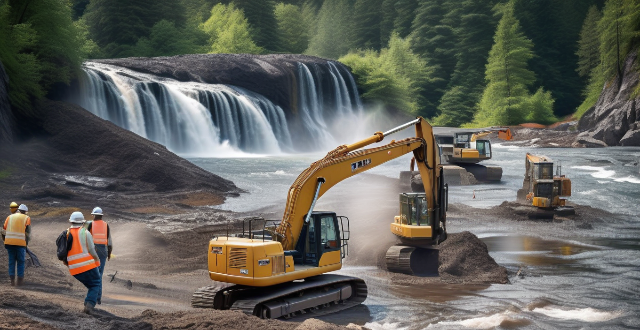Preventing falls at construction sites is crucial for worker safety. Best practices include using fall protection systems like safety nets, personal fall arrest systems, and guardrails; training workers on fall prevention; maintaining a clean and organized work area; conducting regular safety inspections; and ensuring workers wear proper footwear. Following these practices can help prevent accidents and keep workers safe.

Best Practices for Preventing Falls at Construction Sites
Construction sites are inherently dangerous places, and falls are one of the most common types of accidents that occur. To prevent falls, it's important to follow some best practices. Here are a few:
1. Use Fall Protection Systems
Fall protection systems are designed to catch workers who fall and prevent them from hitting the ground. These systems include things like safety nets, personal fall arrest systems, and guardrails. It's important to use the right type of fall protection system for the job at hand.
- Safety Nets: These are used to catch falling objects and people. They should be installed by a professional and regularly inspected to ensure they are in good condition.
- Personal Fall Arrest Systems: These include harnesses, lanyards, and connectors. Workers should be trained on how to properly use these systems.
- Guardrails: These are used to prevent falls from elevated surfaces. They should be strong enough to withstand the weight of a falling person.
2. Train Workers on Fall Prevention
Workers should be trained on how to work safely at heights and how to use fall protection equipment. This includes teaching them about the dangers of working at heights, proper ladder and scaffold use, and how to recognize and avoid hazards.
3. Maintain a Clean and Organized Work Area
A clean and organized work area can help prevent falls. This includes keeping walkways clear of debris, using signs and barriers to mark off hazardous areas, and ensuring that tools and materials are stored properly.
4. Conduct Regular Safety Inspections
Regular safety inspections can help identify potential fall hazards before they cause an accident. This includes checking for things like loose railings, unstable scaffolding, and slippery surfaces. Any hazards identified should be addressed immediately.
5. Use Proper Footwear
Workers should wear shoes or boots that provide good traction and support. Shoes with slippery soles or high heels should not be worn on construction sites.
In conclusion, preventing falls at construction sites requires a combination of using the right equipment, training workers, maintaining a clean work area, conducting regular safety inspections, and ensuring workers wear proper footwear. By following these best practices, you can help keep your workers safe and reduce the risk of falls.